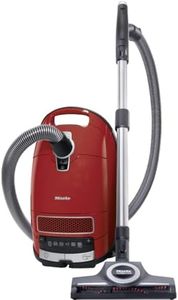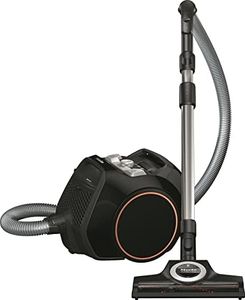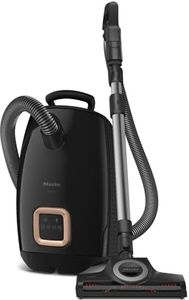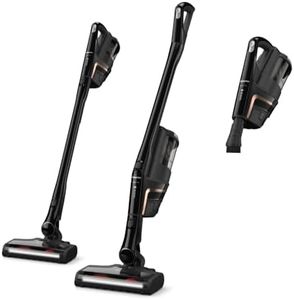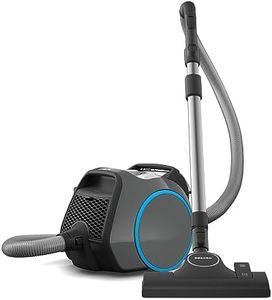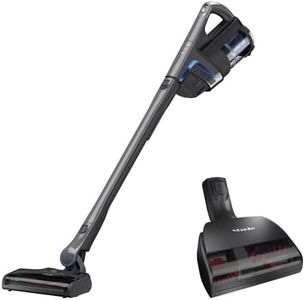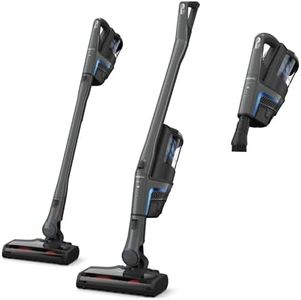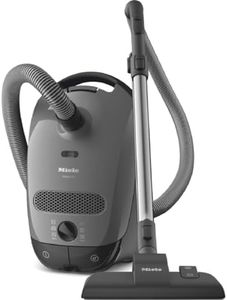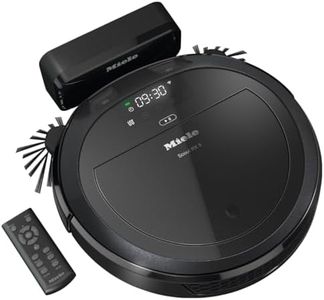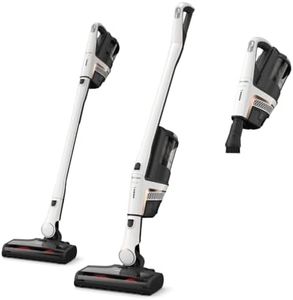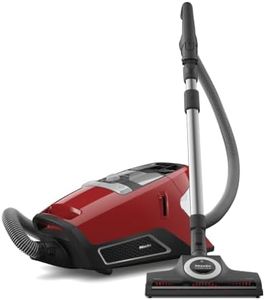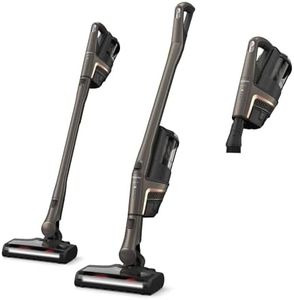We Use CookiesWe use cookies to enhance the security, performance,
functionality and for analytical and promotional activities. By continuing to browse this site you
are agreeing to our privacy policy
10 Best Miele Vacuums
From leading brands and best sellers available on the web.Buying Guide for the Best Miele Vacuums
When selecting a Miele vacuum cleaner, it's helpful to first think about your living space, the types of surfaces you clean most, and your personal needs, such as allergies or pet ownership. A good vacuum will make cleaning efficient, be easy to use, and last for years. Understanding the main specifications will help you pick the model that fits seamlessly into your lifestyle and cleaning habits.Type (Canister vs. Upright vs. Stick)The type of vacuum determines its general shape, maneuverability, and how you use it. Canister vacuums are versatile and often quieter, making them great for a combination of floors and above-floor cleaning, but they can be bulkier to move. Upright vacuums are good for covering large carpeted areas quickly and are easy to use in open spaces. Stick models are slim and convenient for quick cleanups or smaller spaces, but they may not be as powerful for deep cleaning. Think about the layout and size of your home: bigger spaces or thick carpets may benefit from an upright, while smaller homes or varied surfaces might be best suited to a canister or stick.
Filtration (HEPA, AirClean, Standard)Filtration describes how well the vacuum traps dust and allergens. HEPA filters capture the smallest particles and are recommended for people with allergies or asthma. AirClean filters do a great job for most homes, locking in common dust and dirt, while standard filters are suitable for basic cleaning when air quality isn't a big concern. If anyone in your home suffers from allergies or you want the best air quality, look for a vacuum with a HEPA or advanced filtration system; otherwise, AirClean or standard filters may suffice.
Bagged vs. BaglessBagged vacuums collect dust and dirt in a disposable bag, which keeps debris contained and cleaner to empty, making them ideal for allergy sufferers. Bagless models save you the cost of replacement bags and let you see when they’re full, but emptying them can release dust. If you want low-maintenance, easy disposal, or have sensitivities to dust, opt for a bagged system. If you don't mind occasional dust and want to skip buying bags, bagless can be convenient.
Power and SuctionVacuum power generally impacts how well it cleans, especially carpets and rugs. More power means stronger suction to lift embedded dirt, but for hard floors, too much suction isn't always necessary and could even make the vacuum harder to maneuver. Models range from lighter suction, which is easier for bare floors and delicate surfaces, to high suction for deep carpet cleaning. Choose higher power if you have thick carpets or pets, and lower power if your home mostly has smooth floors or area rugs.
Attachments and ToolsAttachments greatly extend what your vacuum can do. Common tools include brushes for dusting, crevice tools for tight spaces, and turbo or motorized brushes for pet hair. If you have pets, look for a package with pet-specific tools. Multi-surface homes benefit from a variety of heads for hard floors and carpets. Consider what you clean most—such as upholstery, stairs, or drapes—and opt for a vacuum that comes with tools suited to those tasks.
Weight and ManeuverabilityA vacuum's weight affects how easy it is to carry or push around. Lightweight models are great if you have multiple floors or need to use the vacuum for quick, frequent cleanups. Heavier models may be more durable and have larger dust capacities but can be cumbersome for stairs or tight spots. Choose a lighter option if you prioritize easy movement, or opt for heavier models if you'll mostly use it on one floor and want larger capacity.
Noise LevelNoise level can impact your comfort while vacuuming, especially in apartments or homes with young children. Quieter models use insulation and special designs to minimize sound, while more basic models may be louder. If noise is important to you, look for vacuums specifically described as 'quiet' or with lower decibel ratings.
